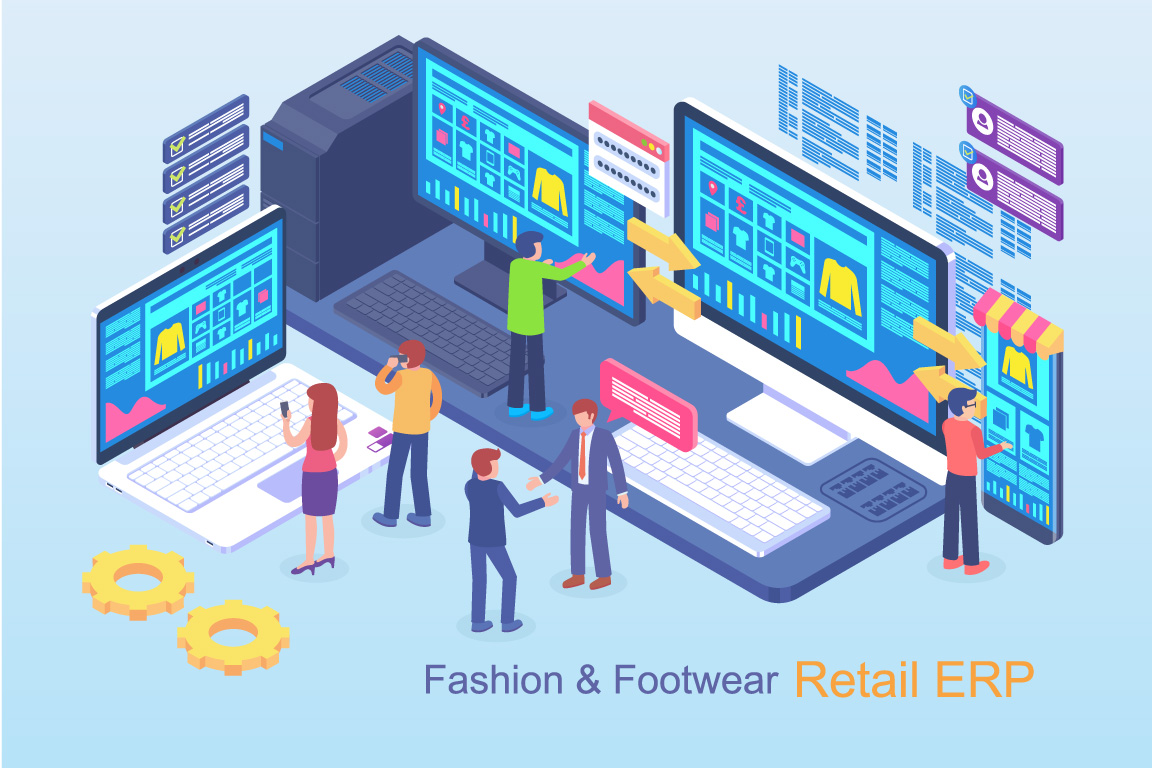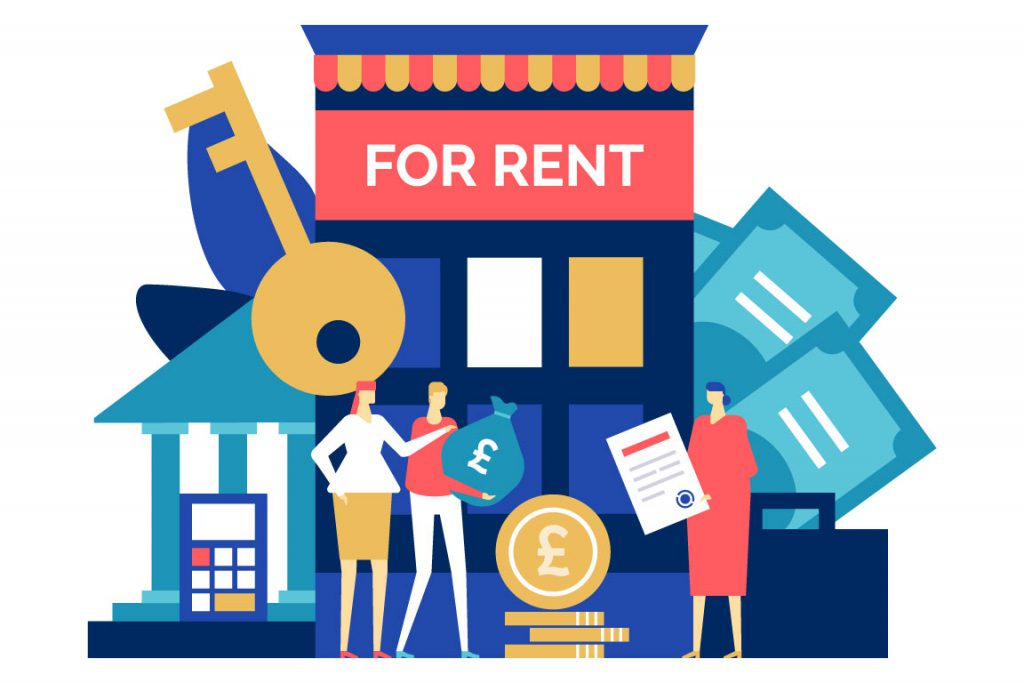Why Retail ERP Software is a Must For Fashion & Footwear Retailers
When managing a fashion or footwear retail operation – or any retail business – you have a lot of moving parts to keep track of. You need to stay on top of your products, stock, suppliers, allocations and replenishment, reward your loyal customers, measure the effectiveness of promotional campaigns, and always keep an eye on your bottom line the whole time. The amount of big data a modern retailer has to keep track of can be overwhelming.
That’s why the tailored Enterprise Resource Planning (ERP) software systems from Eurostop can be so beneficial to fashion and footwear businesses. The right retail ERP software suite, customised to your needs, can streamline numerous aspects of your day-to-day retail operations, while also acting as a quality business intelligence tool for making smart, data driven decisions.
What Is Retail ERP Software?
Simply put, retail ERP software is a centralised piece of software which creates a single view of stock that contains everything you need to manage your retail operations and store portfolio. It connects various software tools while adding all data to a database or datawarehouse where data can then be mined, analysed and reported on.
A typical retail ERP software package includes:
- Integrated (or connected) Point of Sale (POS)
- Inventory Management
- Supplier Management
- Order Management
- Merchandise Management
- Promotions Management
- Longer-term trends tracking and predictions
- CRM-style features for tracking individual customers or demographics
- Integration of multiple sales channels, promotions and reporting
However, one benefit to tailored retail ERP software over a traditional ERP system is that the included modules can be customised, included or excluded based on the specific needs of your retail operation.
Why Do Retailers Need ERP Software?
The primary purpose of retail ERP software is to maintain accurate stock control while streamlining operations, which can also reduce costly mistakes such as stocking errors.
For example, when a customer makes an in-store purchase, the point-of-sale system is synched to the ERP software with a fast and intuitive POS interface that makes it easy for the salesperson to process the sale with accurate stock, pricing, promotion and customer loyalty data. This makes a happy customer since the process happens so quickly and efficiently, minimising potential errors and time waiting at till point. During this process, sales staff may also capture customer loyalty information, including name, address, and (optionally) payment details. This data is stored and can prove invaluable for tracking customer purchase history and future marketing opportunities.
As each POS in the estate is tied directly to the main stock control system, it automatically updates stock totals to reflect sales and refunds so that levels are transparent across your POS estate, channels and also at Head Office. This can prevent multiple channels competing for the same item of stock, allowing you to fulfil requests or orders accurately.
Later on, if the customer visits your online store because they want to buy more of a particular item, such as socks, by logging into their account they can see their own purchase history. This allows them to quickly identify and re-order the socks they want or find other cross sell or up sell opportunities. The system may have even stored their payment details and preferences, to make checkout even faster.
Then, when you’re trying to make purchasing decisions for the upcoming season, you can make effective use of this data – as well as information from all your other customers – to best understand what styles and colours sell, and in what locations. You could also pull up information on your bestselling channels, or even information on sales staff, to see who’s most effective at upsells, or fastest at processing orders.
It’s easy to see how this level of automation and data collection can simplify your life and importantly enhance your retail business.
How should Retail ERP Software Be Setup For Fashion and Footwear Retailers?
That’s an overview of some of the potential customer touchpoints with your brand and how ERP software can assist the customer journey, however managing retail actually goes much deeper. So what sort of setup is particularly beneficial to retail operations?
Master Data Management
A retail ERP system should allow you to setup products by hierarchy or using attributes. This may include organising products by season or other merchandising groups, allowing retailers to manage and report on data correctly to effectively manage their operations.
Size and colour variants are significant in the fashion and footwear industry. It’s important to be able to group SKUs (a particular colour and size variant) without having to setup hundreds of variations of the same product. Not only is the latter option disorganised, but it means that you can’t report easily for example on how well a particular colour line is selling without having to aggregate sales for different sizes. As an example, you may have a dress that comes in 3 different colours and five different sizes. This can be setup as 1 product, with 3 colour and 5 size variants, which is in effect 15 SKUs. The system will then be able to report on sales by individual colour (which would allow you to see which was the most popular colour) or by size. In addition, you would be also able to report on how well the dress sold as a whole that season. By having the right data available in an intelligent format, you can report and better understand your customers’ preferences at both a granular and summary level, to merchandise according to demand.
Supplier Management
Retailers may have a range of suppliers from which they order their product ranges. A holistic retail ERP system will also cater for supplier management. It could also include features to manage information such as supplier prices (cost, rrp, selling price) and packs. The system will process purchase orders for suppliers and allow you to book in and receive deliveries at stores or warehouses.
Stock Management
Stock movements and statuses can be complex; from booking in to receiving and statuses such as in transit, quality control, to location management within a store or warehouse. A retail ERP provides capability to monitor stock at every point to effectively manage all stock adjustments for true and transparent tracking and auditability across your business. Without an intelligent and automated system to manage your stock, this can be nearly impossible to manage manually. By knowing exactly what stock you hold and were it is, you make the most of this valuable asset.
Merchandise Management
Recognise fast-sellers early
If a style, or a particular color/size, is a hit, you don’t want to run out of it too soon. A stock inventory system can also report on ‘cover’, which indicates how long your stock will last, given sales at the current rate, so that you know when to re-order using demand forecasting. Using accurate sales and return data will allow you to action regular and promotional demand forecasting using the merchandising hierarchy, attributes or at store or SKU level.
Cancel restocks of dud products
On the other hand, if an item fails to catch on, you don’t want to keep ordering more. If particular style, colour or size options aren’t popular, you may want to cancel any purchase orders accordingly. Overstocking can be costly, both in terms of capital expenditure and also warehouse space for storage of stock.
Compare multiple outlets and grade and replenish stores
An effective ERP system and business intelligence reporting tools will allow you to report on your channels and store portfolio to find out which locations or channels are better performers, allowing you to allocate according to demand. Stores may be graded and then allocated and automatically replenished according to grade. This means that if you have a high footfall store where sportswear is more popular for example, you may want to allocate more trainers to that location to make the most of that product line and inventory. The system will assist you to range to make the most of your stock holding.
Omnichannel pricing and promotions
In a connected world, customers expect a consistent brand experience. Not only that, retailers often want to react to changing conditions (such as the weather) or plan and manage promotions across a large retail estate and online. An effective retail ERP system will allow retailers to setup and manage markdowns and complex promotions which can be planned and synched to stores in advance. The connected POS will automatically detect the most up to date pricing information, providing great customer service in store.
Why choose Eurostop for quality retail ERP software & inventory tracking?
Eurostop is trusted by fashion and footwear retailers internationally. Our innovative retail ERP software helps maintain central control of your business. With our systems, you’ll receive warehousing information, accounting updates, delivery fulfilment updates, ERP solutions, and advanced reporting and analytics. Additionally, our ERP retail management solutions offer EPOS estate management for all of your selling channels, whether it be brick-and-mortar stores, concessions, franchises, eCommerce sites, and other marketplaces.
We also have a range of other outstanding solutions to make help retailers become more efficient and grow their business, such as mobile POS systems, tenant management systems, and more.
Contact us now for retail ERP solutions
For those interested in streamlining their retail business, contact Eurostop online today for a FREE DEMO or call +44 (0) 208 991 2700.






